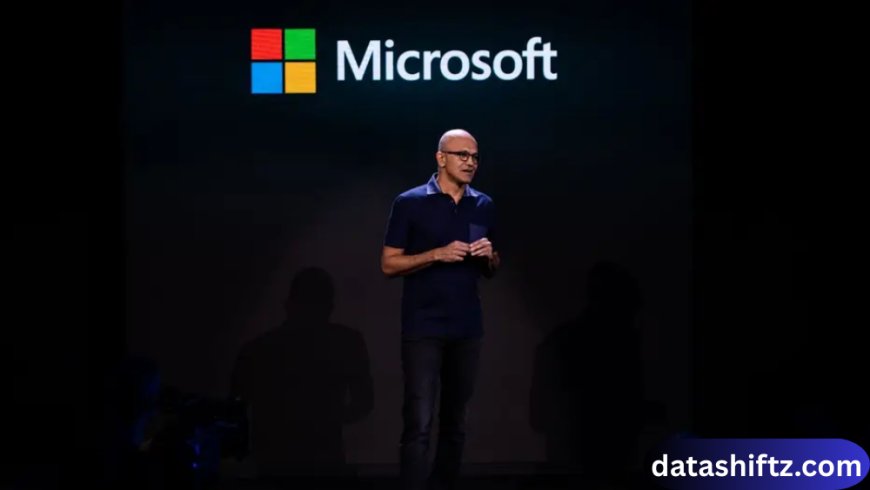Microsoft CEO Satya Nadella: Transforming a Tech Giant for the Future

Introduction
Satya Nadella, the third CEO of Microsoft, is widely credited with leading one of the most remarkable corporate turnarounds in recent history. Since taking the helm in February 2014, Nadella has driven profound changes in Microsoft’s culture, strategy, and product innovation, shifting the company’s focus towards cloud computing, artificial intelligence, and cross-platform solutions.
Under Nadella’s leadership, Microsoft has regained its position as a technology powerhouse, thriving in a highly competitive landscape dominated by companies like Amazon, Google, and Apple. This blog post explores Satya Nadella’s journey, leadership philosophy, key milestones, and the strategic decisions that have shaped Microsoft’s resurgence.
Early Life and Career Background
Early Years and Education
Satya Nadella was born on August 19, 1967, in Hyderabad, India. He showed an early aptitude for technology and engineering, earning a bachelor’s degree in electrical engineering from Manipal Institute of Technology. Driven by a passion for computer science, Nadella pursued a Master’s degree in Computer Science from the University of Wisconsin–Milwaukee, followed by an MBA from the University of Chicago Booth School of Business.
Early Career at Microsoft
Nadella joined Microsoft in 1992, initially working on the development of Windows NT. Over two decades, he rose through the ranks, holding key leadership roles in cloud computing, enterprise, and research divisions. His work spearheaded the development of Microsoft Azure, the cloud platform that now stands as a core pillar of Microsoft’s business.
Satya Nadella’s Leadership at Microsoft
Transformation Strategy
When Nadella took over as CEO, Microsoft was grappling with stagnation and internal competition. His strategy emphasized:
-
Cloud-first, mobile-first approach
-
Open-source software embrace
-
Cross-platform integration beyond Windows
-
Cultural shift towards collaboration and innovation
This strategy revitalized the company’s image and financial performance.
Key Achievements and Milestones (Table Format)
| Year | Achievement | Impact |
|---|---|---|
| 2014 | Appointed CEO | Began company-wide transformation |
| 2015 | Launched Microsoft Azure expansion | Positioned Microsoft as a cloud leader |
| 2016 | Acquired LinkedIn for $26.2 billion | Expanded Microsoft’s enterprise ecosystem |
| 2018 | First $100 billion market cap | Marked Microsoft’s return to top-tier valuation |
| 2020 | Surpassed $1 trillion market cap | Joined exclusive trillion-dollar club |
| 2021 | Acquired Nuance Communications | Boosted AI and healthcare technology |
| 2023 | Microsoft Teams surpassed 280 million users | Dominated remote work collaboration |
Nadella’s Leadership Philosophy
Growth Mindset and Empathy
One of the defining features of Nadella’s leadership is his emphasis on a growth mindset, inspired by psychologist Carol Dweck’s research. He encourages employees to embrace learning, adapt to failure, and innovate continuously.
Moreover, Nadella’s personal experiences, including raising a son with special needs, have nurtured a leadership style grounded in empathy and inclusion. He believes that technology should empower every individual and organization on the planet.
Cultural Transformation
Nadella famously said that Microsoft’s culture needed to move “from know-it-all to learn-it-all.” This cultural pivot has fostered greater collaboration, openness, and a willingness to partner even with traditional competitors.
Major Business Moves Under Nadella
-
Cloud Computing Focus
Azure became a central revenue driver, competing closely with Amazon Web Services (AWS). -
Embrace of Open Source
Microsoft joined the Linux Foundation and open-sourced several projects, breaking old barriers. -
Strategic Acquisitions
-
LinkedIn acquisition strengthened Microsoft’s professional ecosystem.
-
GitHub acquisition bolstered developer engagement.
-
Nuance Communications acquisition expanded AI capabilities, especially in healthcare.
-
-
Expansion of Productivity Tools
Microsoft Teams emerged as a vital collaboration platform during the COVID-19 pandemic. -
Investment in Artificial Intelligence
Enhanced AI integration across products, including Office 365, Azure AI, and cloud services.
Financial Performance and Market Impact
Under Nadella’s leadership, Microsoft’s financial metrics improved dramatically:
-
Revenue Growth: From $86 billion in 2014 to over $230 billion by 2024.
-
Market Capitalization: Surpassed $1 trillion in 2020, making Microsoft one of the most valuable companies globally.
-
Stock Performance: Microsoft’s stock price has more than tripled since Nadella took over.
Challenges and Criticisms
While widely celebrated, Nadella’s tenure has also faced challenges:
-
Regulatory scrutiny over acquisitions, especially LinkedIn and GitHub.
-
Competition with Amazon AWS in cloud remains intense.
-
Pressure to maintain innovation pace amid rapid technological changes.
Nevertheless, Nadella’s calm and forward-looking approach has helped Microsoft navigate these complexities.
The Future Vision of Satya Nadella and Microsoft
Looking ahead, Nadella continues to champion emerging technologies:
-
AI and Generative AI integration, partnering with companies like OpenAI.
-
Expansion into metaverse and mixed reality via Microsoft Mesh and HoloLens.
-
Commitment to sustainability, aiming for Microsoft to be carbon negative by 2030.
-
Focus on digital inclusion and ethical AI development.
Nadella’s Impact at a Glance
| Aspect | Pre-Nadella (2013) | Post-Nadella (2025) |
|---|---|---|
| Market Cap | ~$300 billion | >$2.5 trillion |
| Revenue | $86 billion | $230+ billion |
| Cloud Revenue | Nascent Azure platform | $80+ billion annual Azure revenue |
| Culture | Internal competition & siloed | Collaborative, learning culture |
| Product Focus | Windows-centric | Cloud, AI, cross-platform |
| Acquisitions | Few major deals | LinkedIn, GitHub, Nuance, Activision |
Conclusion
Satya Nadella’s leadership of Microsoft is a testament to the power of visionary thinking, cultural evolution, and strategic innovation. By reshaping Microsoft’s business model and culture, Nadella not only revitalized the company but also helped redefine the tech landscape for the modern era.
His journey from an engineer in Hyderabad to the CEO of one of the world’s largest companies inspires countless leaders and innovators worldwide. As Microsoft continues to lead in cloud computing, AI, and enterprise solutions, Satya Nadella’s influence remains deeply embedded in its DNA—pioneering a future where technology empowers everyone.






























